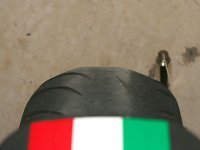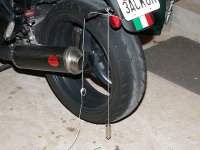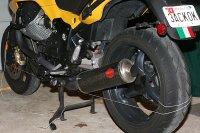3ackok
Cruisin' Guzzisti
A lot of good information, thanks! Before I read it, I spent the evening jumping around the bike, trying to take measurements.
First, this is my rear tire. The tire is Avon Storm, and it is 170x60 instead of the factory 180x55. The previous owner told me that narrower size improves handling.
First, this is my rear tire. The tire is Avon Storm, and it is 170x60 instead of the factory 180x55. The previous owner told me that narrower size improves handling.



